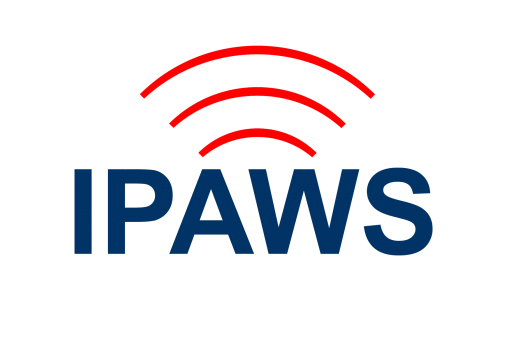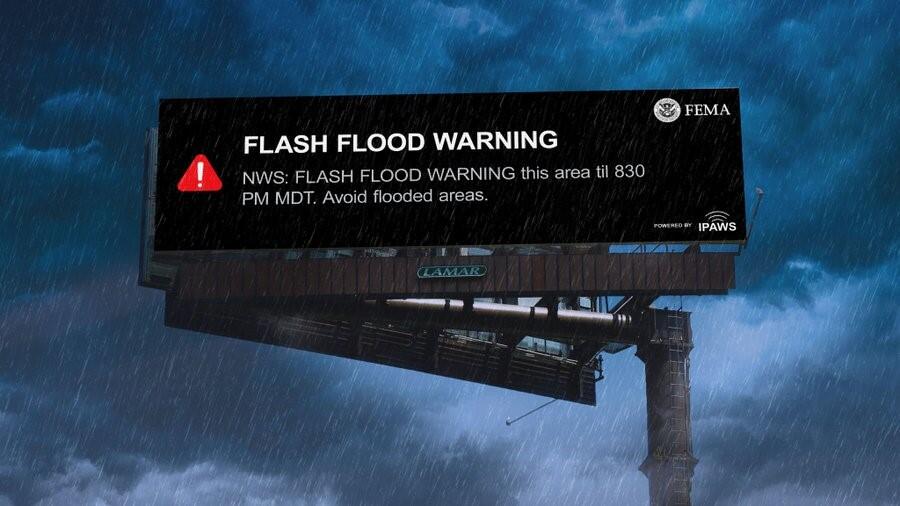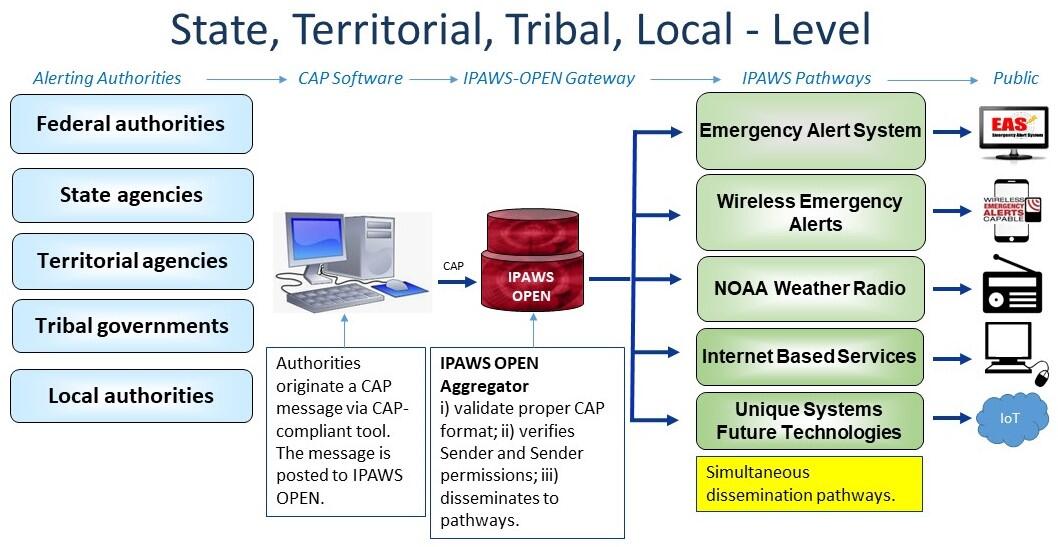The Integrated Public Alert & Warning System (IPAWS) is FEMA's national system for local alerting that provides authenticated emergency and life-saving information to the public through mobile phones using Wireless Emergency Alerts, to radio and television via the Emergency Alert System, and on the National Oceanic and Atmospheric Administration's Weather Radio.

News & Updates
Emergency alerts transmitted over FEMA’s Integrated Public Alert & Warning System are being displayed on select Lamar Advertising Company digital billboards in the areas around the country affected by the alerts.

IPAWS alerts have already appeared on Lamar digital billboards in 17 states and are available to run in all 43 states that Lamar covers.
See the News Release.
The Navajo Nation was among the initial Alerting Authorities and the first from a Tribal Nation to issue a live Wireless Emergency Alert in March 2020 as part of the coronavirus (COVID-19) public health emergency response, when 49 initial cases of COVID-19 were confirmed on the western part of the reservation.
In this webinar, Al Kenyon of IPAWS Customer Support, provided an overview of IPAWS and Navajo Nation Emergency Management Director, Harland Cleveland, joined to discuss the Navajo Nation's experience using IPAWS and to take questions.
Download a recording of this webinar, and view previous IPAWS webinars.
How IPAWS Sends Alerts
IPAWS allows Alerting Authorities to write their own message using commercially available software that is Common Alerting Protocol (CAP) compliant. The message is then delivered to the Integrated Public Alert and Warning System, Open Platform for Emergency Networks (IPAWS OPEN), where it is authenticated and then delivered simultaneously through multiple communication pathways. Through IPAWS, one message is created to reach as many people as possible to save lives and protect property.
Utilizing multiple pathways for public alerts increases the likelihood that the message will successfully reach the public. IPAWS is structured to facilitate this functionality.

Communication Pathways
The Emergency Alert System (EAS) delivers alerts via AM, FM and satellite radio, as well as broadcast, cable and satellite TV.
Cell phones and mobile devices receive Wireless Emergency Alerts based on location, even if cellular networks are overloaded and can no longer support calls, text and emails.
The National Oceanic and Atmospheric Administration (NOAA) delivers alerts through NOAA Weather Radio.
Alerts are also available from internet service providers and unique system developers.
State, local, territorial, and tribal alerting systems such as emergency telephone networks, giant voice sirens, and digital road signs may also receive alerts from IPAWS-OPEN, and future alerting technologies and systems can easily be integrated into IPAWS.
IPAWS Tools by Audience
Whether you're sending, receiving, developing or communicating about alerts, find the tools you need for your role in the Integrated Public Alert & Warning System.
General Public
Broadcasters & Wireless Providers
IPAWS Technology Vendors & Developers

Have a Question?
Email us at ipaws@fema.dhs.gov or call (202) 212-2040
About the IPAWS Program
FEMA established the IPAWS program in 2006 by Presidential Executive Order 13407. Today there are more than 1,500 federal, state, local, tribal and territorial alerting authorities that use IPAWS to send critical public alerts and warnings in their jurisdictions.
Mission
IPAWS is guided by its mission IPAWS Strategic Plan: Fiscal Year 2014-2018 to provide integrated services and capabilities to federal, state, local, tribal and territorial authorities that enable them to alert and warn their respective communities via multiple communications methods.
Vision
The IPAWS vision is to provide timely alert and warning to the American people in the preservation of life and property using the most effective means for delivering alerts available at any given time.

